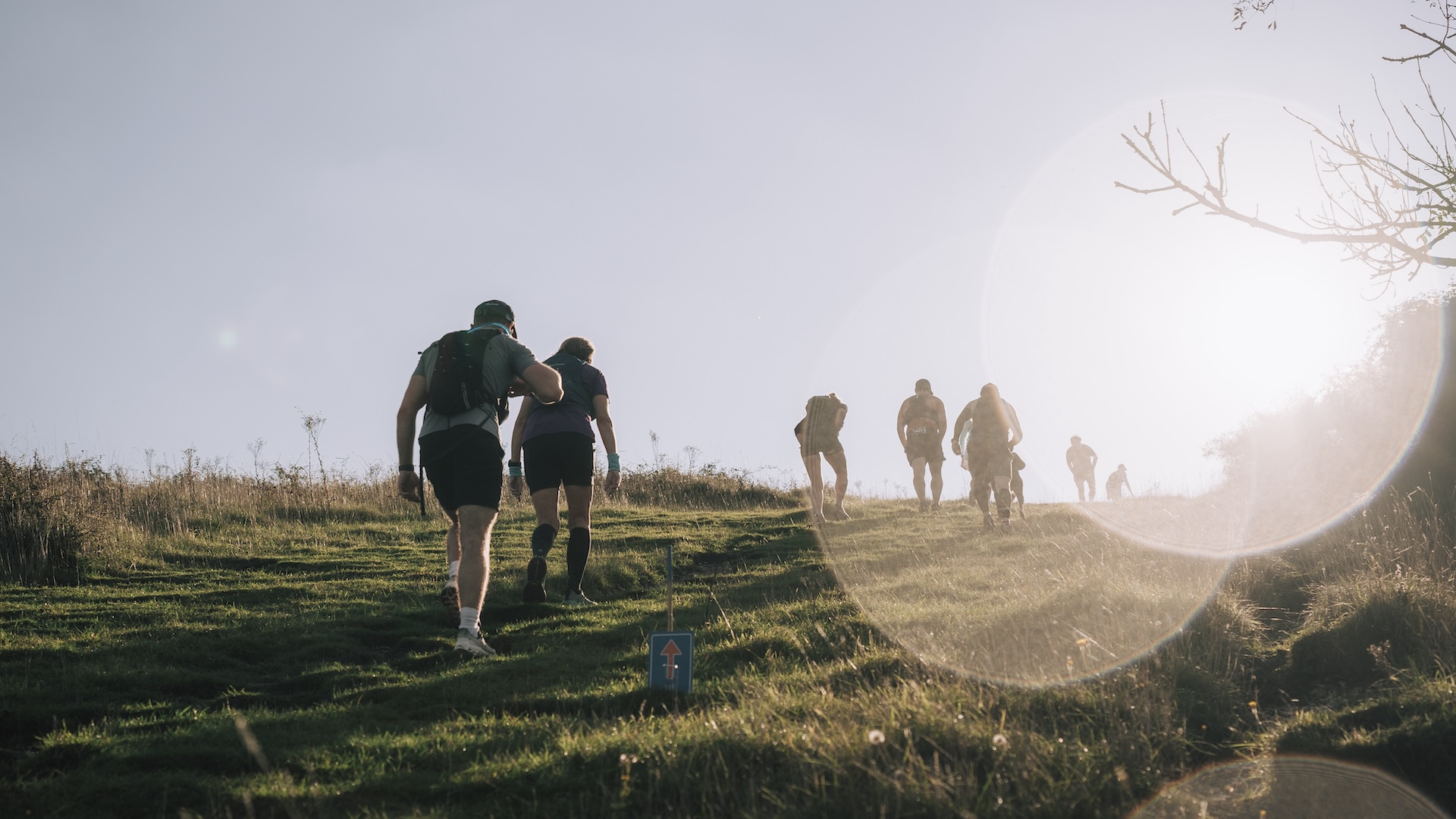Why Runners Need To Do Hill Reps

Whether you love hills or avoid them as much as possible, we’re here to tell you why hills are an essential part of training for runners – and how they could make you stronger and faster.
In this guide to hill running, we’re looking at:
- What are hill reps and hill workouts for runners
- Why is running on hills good for runners?
- What’s the best gradient for hill running?
- How to run uphill
- How should I incorporate hills into my training?
- How hilly runs help prepare for hilly races
- Don’t forget the downhills
- Good examples of hill workouts for runners
WHAT ARE HILL REPS AND HILL WORKOUTS FOR RUNNERS?
Much like intervals or tempo runs on the road or track, you can follow similar workouts but do them on hilly routes. That could be anything from short hill sprints to longer undulating Fartlek tempo runs.
And there are lots of benefits to running on hills.
WHY IS RUNNING ON HILLS GOOD FOR RUNNERS?
Regardless of whether you’re running hill sprints or just enjoying undulating trail runs, there are a lot of benefits to runners who incorporate hills into their training.
- Hills are your friend. While running up and down them is hard, they can help you get a lot stronger as a runner because going uphill requires more power and effort than running on the flat as you’re moving both forward and up. The more you train hills, the more efficient you can become at running them – and that fitness transfers to running on flat surfaces
- You don’t need to run fast over hills to get the benefits. Doing your easy runs on hilly routes or trails can really help you get stronger as a runner
- Running uphill is particularly good for strengthening muscles on the backs of the legs, like the calves, hamstrings and glutes, plus the hip flexors and core
- Doing hill reps can help you to improve your running form
- Running downhill can also help to strengthen the quads
And if you struggle on hills (particularly very steep ones) then slow down into a hike or walk as this is often just as effective as running at working all the important muscles.
WHAT’S THE BEST GRADIENT FOR HILL RUNNING?
If you’re looking to run hill sprints, then aim for something around 6-10%, which is ideal to mean you can run hard without it being so steep that the rep is impossible.
If you want to do steadier and longer tempo runs, then look for hills around 4-6% gradient (the Newton Hills in the Boston Marathon average around a 5% gradient).
And if you’re running a very hilly trail race with steep inclines and declines then it’s a good idea to try to practise on very hilly terrain. Hills over 20% can be very hard to run up and you may want to practise your hiking technique.
If you struggle to find hills like this near where you run, then you could incorporate them as treadmill runs.
HOW TO RUN UPHILL
It’s difficult to run uphill with bad form, meaning uphill running teaches your body to run better when it’s on the flat.
To effectively and efficiently run uphill you want to run tall, hold your shoulders back, and increase your cadence to take shorter but more frequent steps, which will make the hill feel easier (it’s very hard to run uphill with great long strides).
Learning this good form on hills – which is best reinforced with hill repeats or sprints – is something you’ll naturally use when running on the flat.
Don’t worry about your pace when running uphill. Focus on maintaining a steady and manageable effort, then try to use the downhill to recover – but that doesn’t mean sprint down the other side, and you should take it easy and run relaxed on the downs.
HOW SHOULD I INCORPORATE HILLS INTO MY TRAINING?
One way to add more hills into your training is to incorporate regular trail runs as part of your easy runs. You don’t need to run fast on hills to feel their benefits, so hit the trails for easy runs and long runs, especially when you’re at the beginning of a training block.
If you want to use hills for workouts then we’ve got some suggestions below, but you can run short hill sprints, like strides; you can do longer hill reps of around one minute; or you can do longer tempo runs on hills.
You can run on hills every day if you want to and if you live near trails. If you want to add in specific hill workouts, then do them once or twice a week.
HOW HILLY RUNS HELP PREPARE FOR HILLY RACES
If you’ve signed up for a hilly race, then it’s a great idea to practise runs which cover a similar elevation, or with similar hills.
Try to find a map of your race with the hills (a .gpx file can help, or find a Strava post from last year’s race) and look at what the hills are like. Can you find a similar hill near where you live?
Finding an undulating route to train on can also be a great way to make a flat race feel easier. If you can run at race pace while going up and down over gradual hills, then you can run it on the flat.
DON’T FORGET THE DOWNHILLS!
What goes up… In any hilly race you’ll always have downhills as well as the up, and it’s really beneficial to practise running those downs – just ask anyone who’s run a very hilly road race like the Boston Marathon and they’ll tell you how much the downhills beat up your quads.
Downhill running involves a lot of eccentric muscle contractions, where muscles lengthen whilst under tension. That can cause muscle damage, but that soreness rebuilds into stronger muscles. And this study suggests that downhill running could also make flat running easier.
Try to run relaxed on the downhills. If they aren’t too steep, then try to let gravity carry you and try to land on your midfoot as heel-striking can act as a brake when running downhills.
EXAMPLES OF GOOD HILL WORKOUTS FOR RUNNERS
5-10 HILL SPRINTS
At the end of an easy run or workout, find a short hill and run very hard for 10-15 seconds. Walk back down and repeat 5-10 times.
5-10 HILL REPEATS
Run these repeats at a slower pace than sprints, but go for a longer distance. Aim for 30-60 seconds which will help to build up more endurance on the hills.
TRAIL FARTLEK
On a hilly or undulating trail route, alternate between easy and harder running. You could change every kilometre or every few minutes, and it’s a great way to push on both the ups and the downs.
LONG HILL TEMPO
Perfect for training for hilly races like Boston or NYC Marathon, find a longer stretch of road (over 1km if possible) with around a 4-6% gradient and run at a tempo pace up and then back down again.
TREADMILL HILLS
If you live in a flat area, or can’t find quite the right hills, then treadmills are a reliable way to train running uphill. Most go to 12-15% gradient, and some can also do a -3% for downhills. Try 4-6% for longer efforts (5 x 2-4 minute repeats is a good workout), or push it to 10% for faster sprints.
***
Do you incorporate hills into your training? Do you feel the benefits of running on hills?



























Running News
Ingebrigtsen Stars at World Athletics Indoor Championships 2025 – Plus All The Winners!
Sam Ruthe Is First 15-Year-Old To Run A Four-Minute Mile!
Eliud Kipchoge Will Run The 2025 Sydney Marathon!